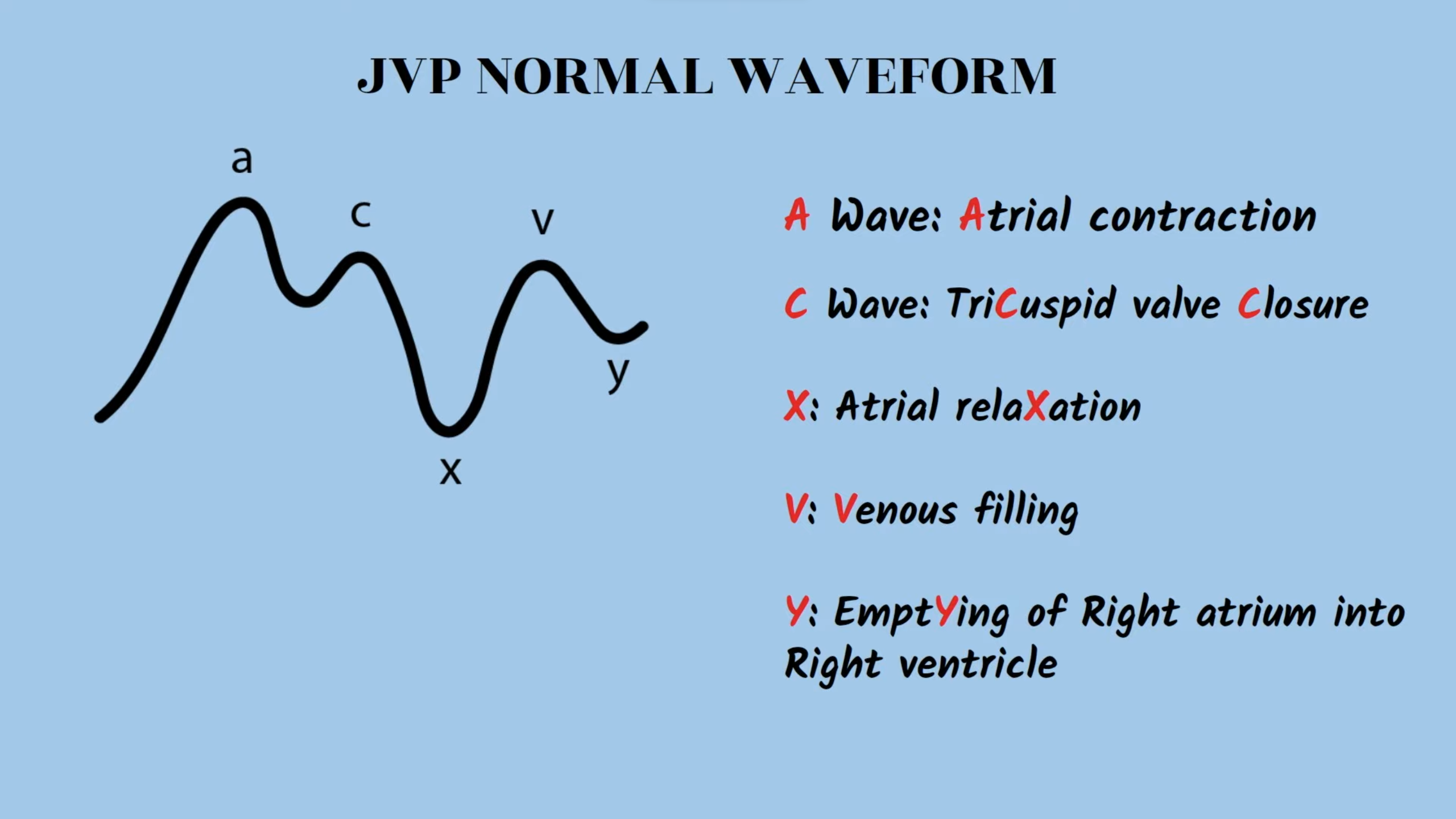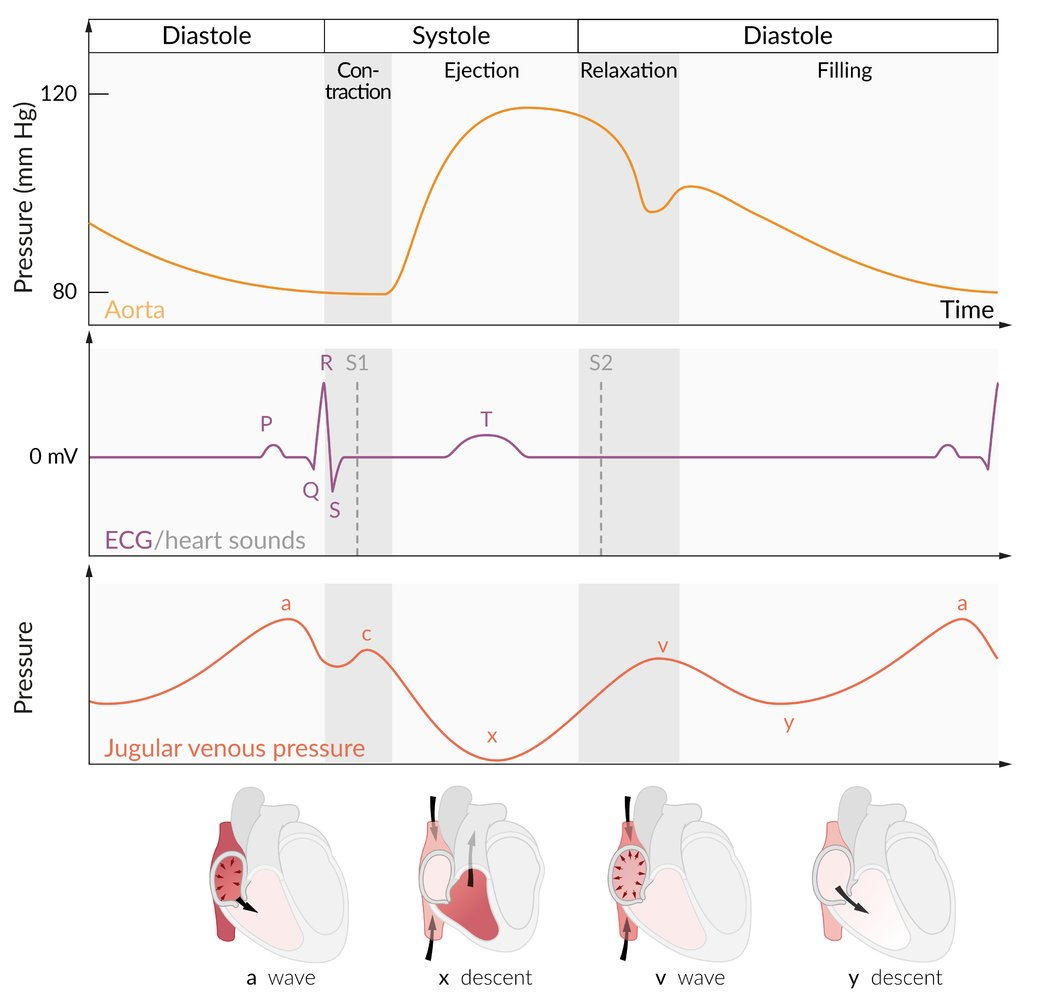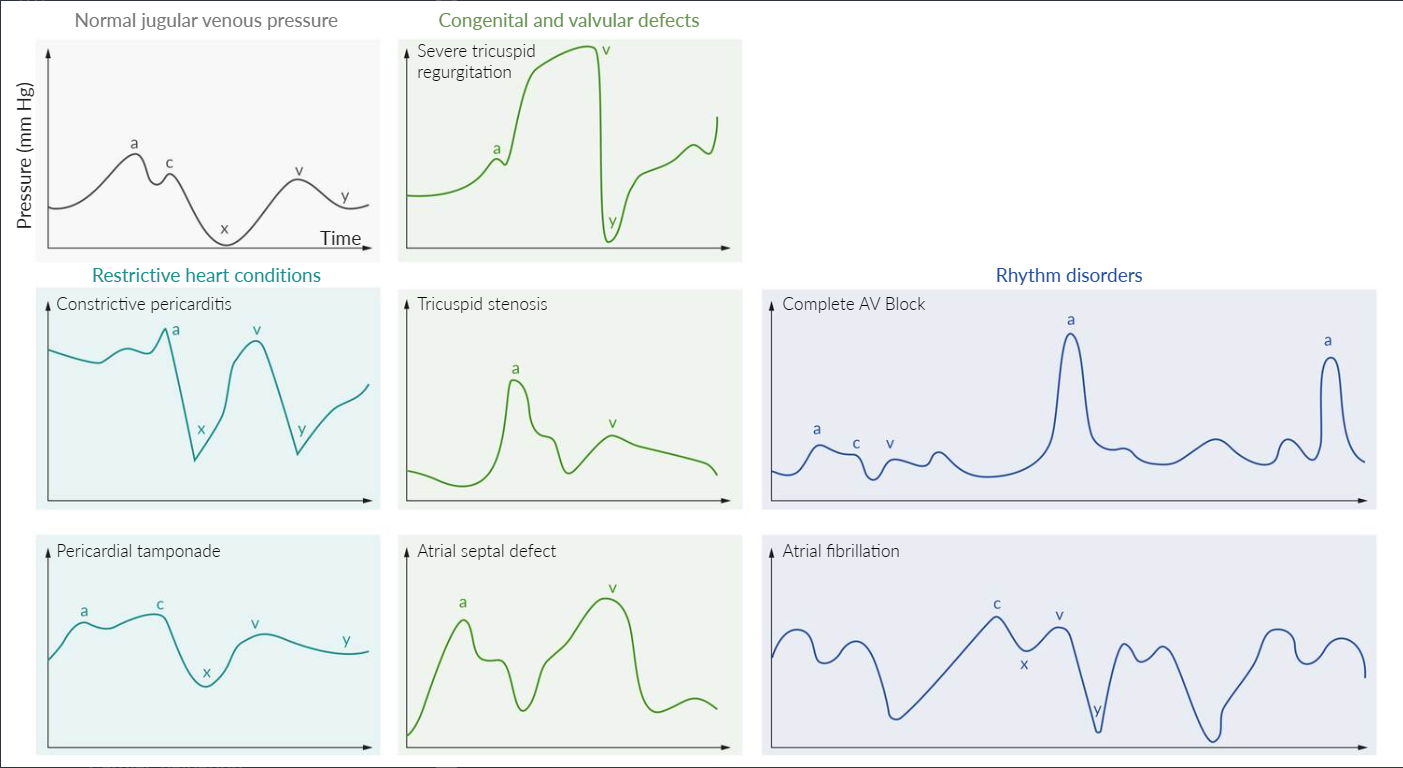Cardiac auscultation
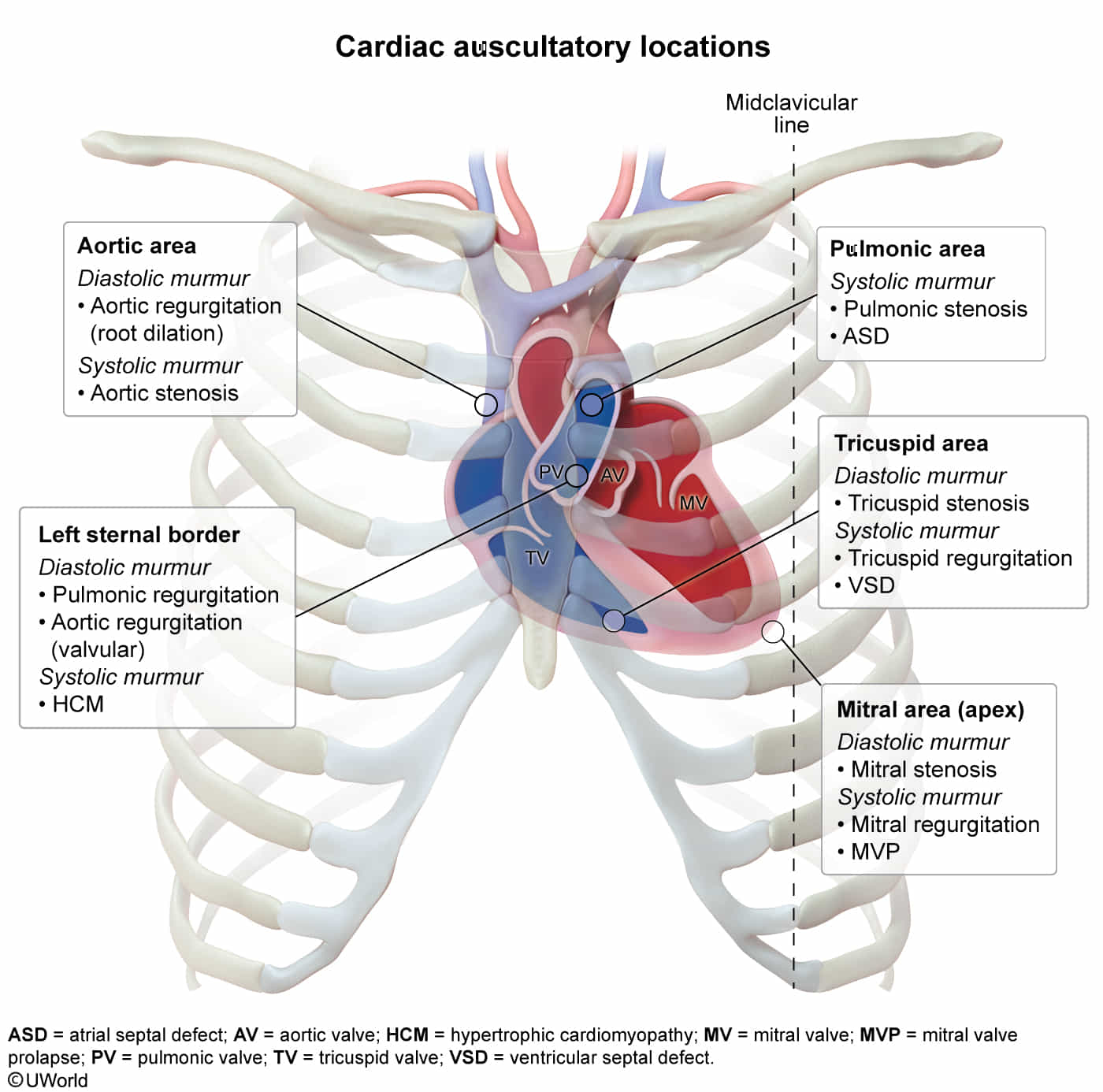

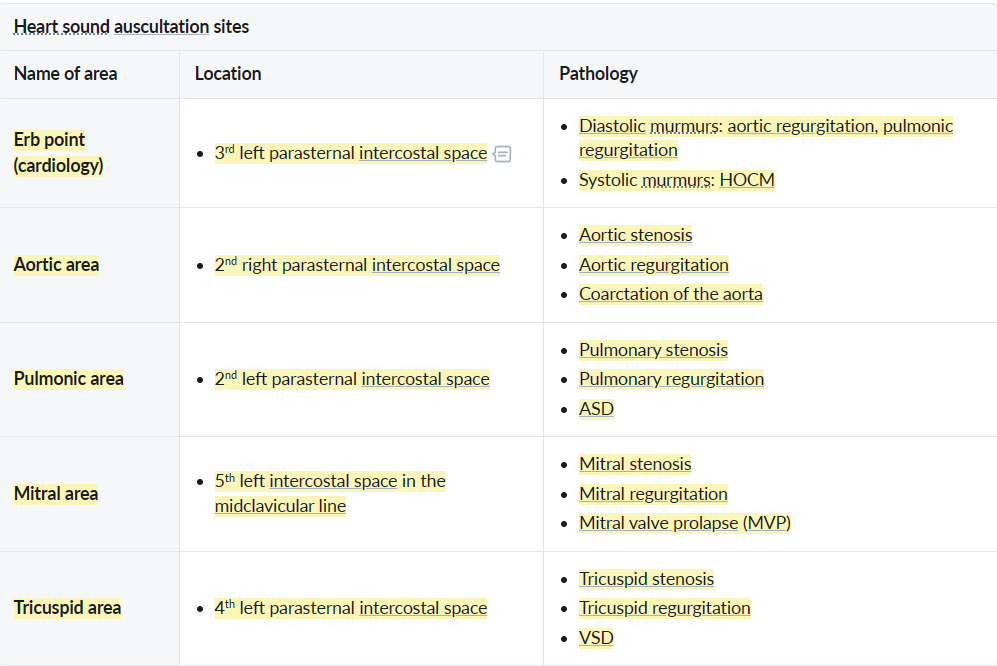
Heart murmurs

Heart sounds
Extra (gallop) heart sounds
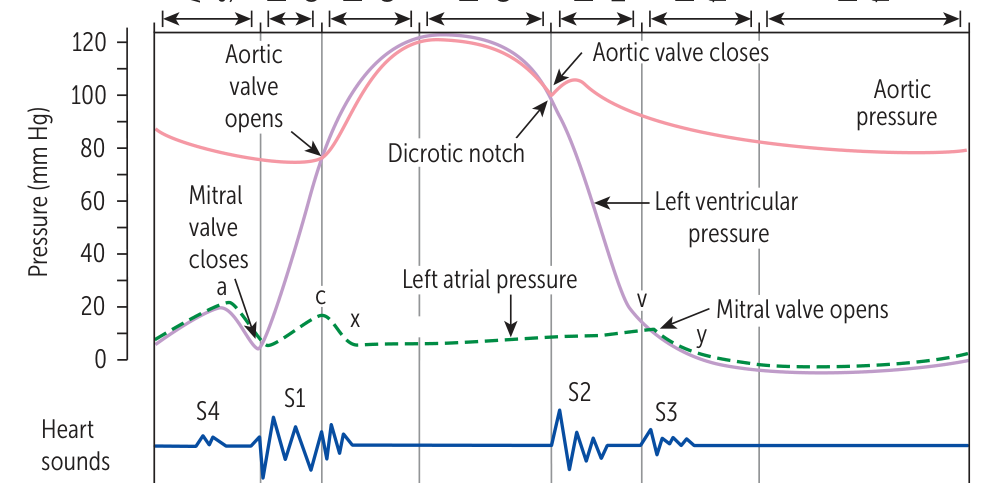
Tip
- S3: volume-overloaded
- Three tree → tree is big and large → ventricle is large
- S4: pressure-overloaded
- Four door → door is hard → ventricle is stiff
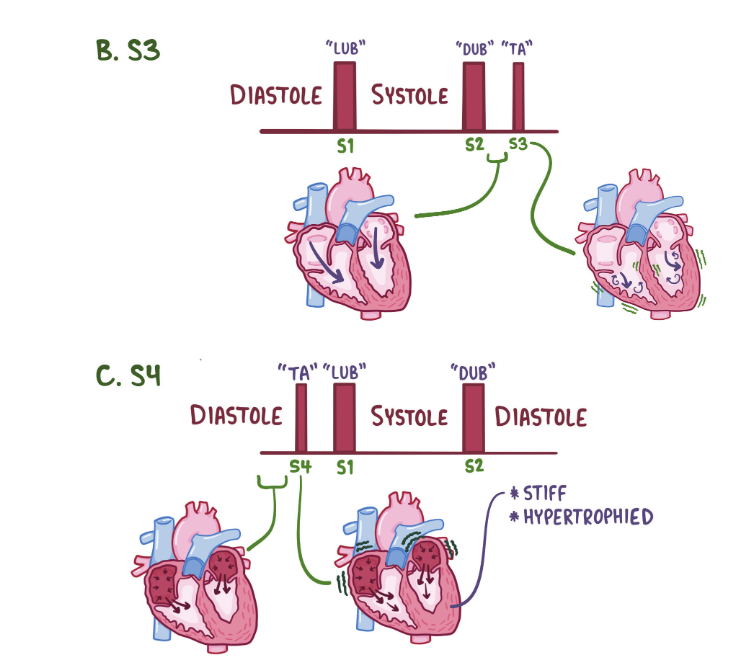
- Four door → door is hard → ventricle is stiff
S3
- Features
- Heard just after S2 (after opening of mitral valve)
- Caused by reverberant sound as blood fills an enlarged LV cavity during passive diastolic filling (i.e. end systolic volume is high)
- Associated disorders
- Heart failure with reduced EF
- High-output states (eg, thyrotoxicosis)
- Mitral or aortic regurgitation
- Teens or athletes
- Hearts are trained to handle more blood
S4
- Features
- Heard just before S1 (before closing of mitral valve)
- Caused by blood striking a stiff LV wall during atrial contraction
- As the atria contracts in late diastole against a stiffened ventricle, it must increase its force-production, which creates turbulent blood flow.
- Associated disorders
- Concentric LV hypertrophy
- Restrictive cardiomyopathy
- Acute myocardial infarction
S2 split
- Physiological split
- The sound of aortic valve closure (A2) precedes the sound of pulmonary valve closure (P2) during inspiration
- Especially pronounced among young individuals
- Wide split
- Caused by any condition that increases right ventricular afterload or decreases left ventricular preload
- Causes
- Pulmonary hypertension
- Pulmonary valve stenosis
- RBBB
- Fixed split
- ASD
- Paradoxical split (reversed split)
- Audible during expiration but not inspiration
- Expiration: A2 is heard after P2 during expiration due to delayed closure of the aortic valve (split reversal)
- Inspiration: the closure of the pulmonary valve is also delayed, resulting in A2 and P2 occurring simultaneously (i.e., a paradoxical decrease in the split during inspiration)
- Causes
- Aortic stenosis
- Left bundle branch block
- Audible during expiration but not inspiration
